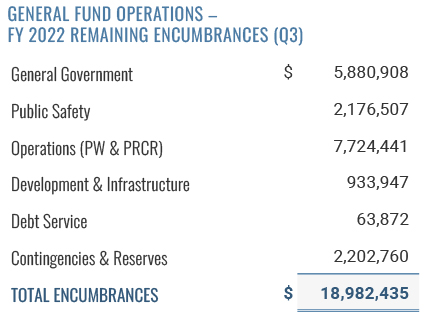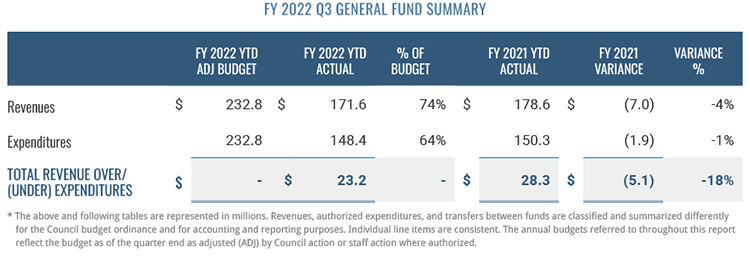
Overall net results for Q3 have declined 18%, or $5.1 million, compared with the prior year’s third quarter. Positive increases in sales taxes and Parks, Recreation, and Cultural Resources (PRCR) revenues were offset by a decrease in grant revenue and non-operating revenue. Differences in non-operating revenues and expenditures compared to Q3 of FY 2021 are due to debt refinancing last year.
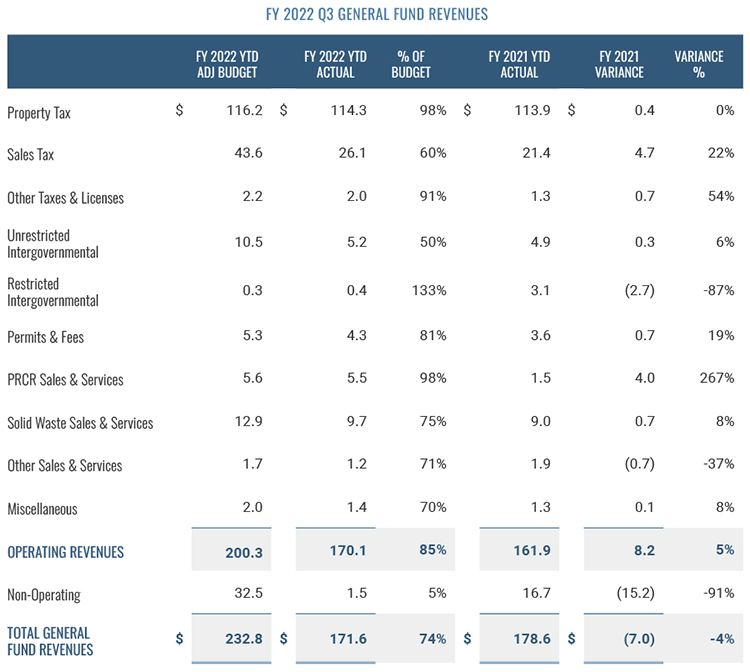
FY 2022 General Fund operating revenues have increased $8.2 million, or 5%, over the same period in FY 2021. Increases in operating revenue from sales tax, permits and fees, the revitalization of PRCR sales and services revenue, and other taxes and licenses are offset by decreases in restricted intergovernmental and other sales and services revenue. Those decreases are due to the receipt of CARES grant funds during the prior year and the timing of cell tower lease receipts.
Non-operating revenues have declined $15.2 million, or 91%, because FY 2021 included a general obligation debt issuance to refinance existing debt.
Operating Revenues
Property tax revenue is 50% of total budgeted revenue and is the largest revenue source for the General Fund. Taxes are based on an ad valorem tax levy on real and personal property. Real property includes land and buildings. Vehicles and commercial business equipment are included in personal property valuations. Real property taxes were billed in July 2021 and were due no later than January 5, 2022. Therefore, most real property tax revenue is received during Q2. The majority of personal property tax revenue is collected throughout the year based on the state of North Carolina’s Tax and Tag program, which combines the vehicle ad valorem tax collection with the state’s vehicle license renewal process. The FY 2022 budget for property tax is $116.2 million, and as of Q3, Cary had received $114.3 million. Property tax is expected to slightly exceed the property tax budget.
Sales tax revenue is 19% of budgeted General Fund revenue and is the second largest revenue source for the General Fund. Sales tax revenue through Q3 is $26.1 million, or 22% more than the same quarter of last fiscal year. This revenue stream is distributed to municipalities by the North Carolina Department of Revenue two and a half months after the month the taxable sales occurred. This continued increase in sales tax continues to outpace expectations and has been attributed to significant retail sales, the current strength of the economy, and rising prices in some sectors.
Collectively, permits and fees revenue increased 19% compared with the prior year. Increases in this area are directly influenced by development activity in multi-family and non-residential developments. The Fenton property was influential in Q3’s growth. More detail on permit activity can be found within the Shape and Live chapters of this report.
Parks, Recreation, and Cultural Resources (PRCR) sales and services increased 267% compared with Q3 of FY 2021 as programs returned from pandemic cancellations. PRCR receipts are expected to meet budget as of year-end.
The 91% decline through Q3 in non-operating revenue reflects a reduction in revenue due to a $15 million bond refinancing that occurred in FY 2021.
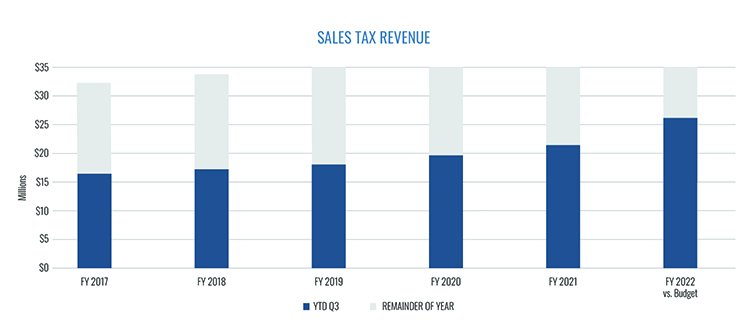
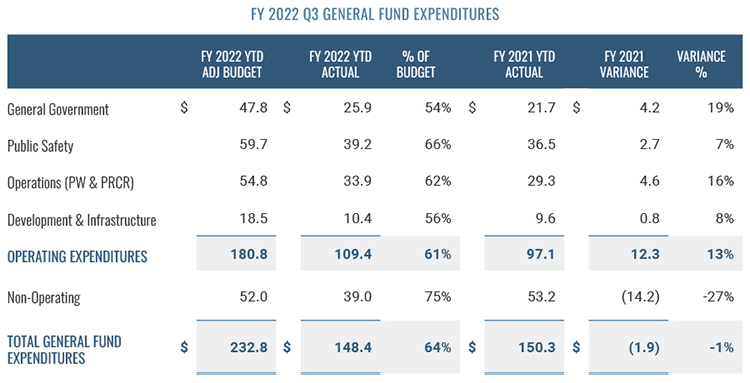
Overall, General Fund expenditures are relatively unchanged compared with Q3 of last year. Operating expenditures are up 13%, while non-operating expenditures are down 27%. Operating expenditure increases reflect inflationary increases and the return of programming costs in PRCR programming and facility operations. Pandemic response and workforce management continue to impact General Government service areas like Human Resources. The decline in non-operating spending is due to the combination of the timing of the debt refinancing and operating and capital needs.
Encumbrances represent funds that have been reserved in Cary’s financial system to satisfy a commitment to make a purchase. The following table shows the total outstanding encumbrances in the financial system that remain at the end of Q3. When including these encumbrance amounts with year-to-date spending, the General Fund has nearly $65 million of budgeted funds available for the remainder of the fiscal year.
